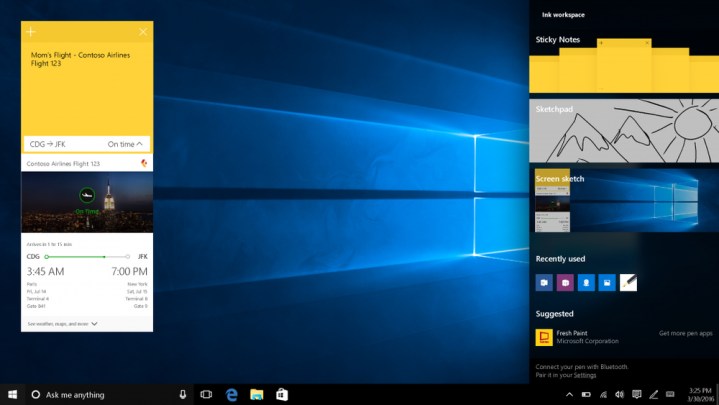
Don’t worry: customers won’t need to run out and buy a new device or upgrade components — although the updated “desktop” platform will require 2GB of memory for both 64-bit and 32-bit versions of Windows 10. Even more, the new size of Windows 10 “desktop” will require 20GB of storage for the 64-bit version and 16GB for the 32-bit version.
For Windows 10 Mobile, devices will need 1GB of memory or higher, at least 8GB of storage, and a screen measuring nine inches or less (up from eight inches) that support resolutions ranging from WVGA to WQHD. A rear-facing camera on phones is required (optional for tablets), but front-facing cameras are optional. Phones must also have an audio codec, a primary microphone, a loudspeaker, an earpiece, Wi-Fi and cellular connectivity, and more.
In a recent blog post, Microsoft points out that the memory requirements for Windows 10 Mobile have doubled while the RAM carve-out by SoC makers has changed from 90MB or more to 115MB or more. The hardware requirements also now include a number of SoCs such as the MSM8994, MSM8992, MSM8952, MSM8909, and MSM8208 chips. The term “digital pen” has changed to “active pen.”
On the desktop front, Windows 10 Anniversary Update will require a processor or SoC clocked at 1GHz, 2GB of RAM as previously mentioned, 16GB or 20GB of storage, a screen larger than seven inches (down from eight inches) for tablets, 2-in-1s, laptops, and all-in-ones, a resolution of 800 x 600 or higher, and access to the Internet whether through Wi-Fi or Ethernet. At least one video output is required.
For both the desktop and mobile platforms, Microsoft highly recommends that device makers build autofocus into their rear cameras although this feature will remain optional. However, the camera still-capture pixel aspect ratio has changed from 1.0 to 1.1 square pixels. The camera flash specifications have also been moved from recommended to required.
Finally, customers running Windows Server 2016 Technical Preview will need a 64-bit processor or SoC clocked at 1.4GHz, and 512MB of memory. Other requirements will include 60GB of storage, a display resolution of 1,024 x 768 or higher, a gigabit Ethernet adapter, and a network adapter that supports PXE. As with the previous two operating systems, Microsoft lists a ton of optional hardware components that the operating system will support, but that are not necessarily required.
Windows 10 Anniversary Update is expected to roll out on July 29, 2016, the same day Microsoft will pull the plug on its free upgrade Windows 10 promotion for customers using Windows 7 SP1, Windows 8, and Windows 8.1. This will supposedly be Microsoft’s biggest update to the platform since its release on July 29, 2015, featuring enhancements to Cortana, a better unified storefront, cross-platform gaming with the Xbox One, and loads more.


